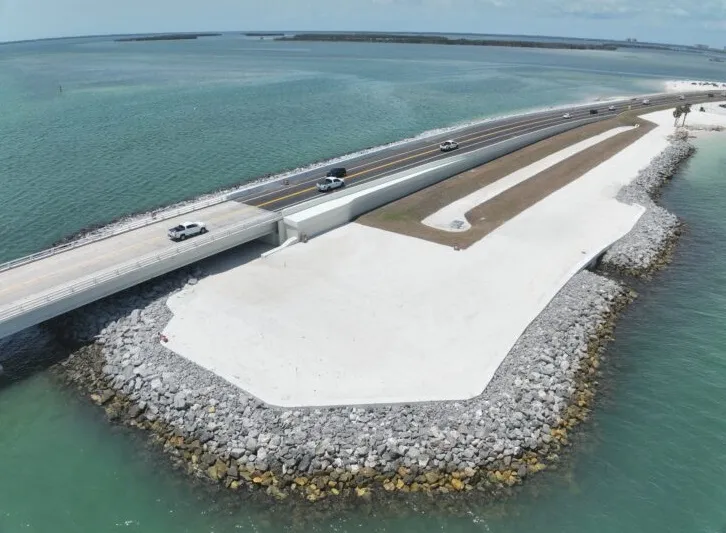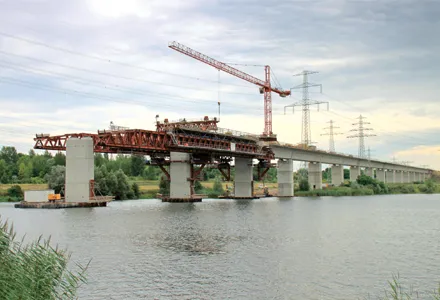
The joint venture team of Superior Construction and de Moya says it has substantially completed the US$328m restoration project Sanibel Causeway in Florida.
The project has re-established and fortified the critical three-mile lifeline between Sanibel Island and mainland Florida that was devastated by Hurricane Ian on September 28, 2022.
When Hurricane Ian destroyed the causeway, Sanibel and Captiva Islands were completely cut off, paralyzing the tourism-dependent economy and leaving residents stranded.
The emergency response team restored temporary access in 15 days, enabling first responders to reach the islands and allowing residents to begin recovery efforts.
“What makes this project special is that we’ve given this community infrastructure they can rely on through whatever comes next,” said Toby Mazzoni, project manager at Superior Construction. “We build for the long haul, especially when communities are counting on us most.”
The project marked the Florida Department of Transportation’s first phased design-build contract and highlighted the JV team’s innovative approach, enabling emergency and permanent repairs to start while the design was still in development. The JV team successfully navigated complex logistics while maintaining traffic flow throughout construction.
“The joint-venture team overcame this project’s logistical challenges with tenacity,” said Superior Construction CEO Nick Largura. “Building five seawalls during the hurricane season, railing in high-quality armor stone materials from Alabama and Georgia quarries, and improving resilience, while collaborating with multiple stakeholders on a first-of-its-kind phased design-build contract, is a monumental feat. I’m incredibly proud of this team.”
At peak construction, the JV team coordinated multiple specialized crews simultaneously: three for pile-driving, four for earthwork, two for storm drainage, six for rebar tying, eight for concrete placement and three for asphalt paving, all while keeping two lanes of traffic open for island residents and visitors.
The rebuilt causeway now features dramatically enhanced storm resilience, including steel sheet pile wall systems, concrete caps, strategically placed armor stone, elevated seawalls, advanced stormwater drainage systems throughout the causeway, 19,500 tonnes of asphalt pavement, and various permanent roadway concrete barriers.
The project’s resilience was put to the test during construction when 2024’s Hurricanes Debby, Helene and Milton struck Florida. Completed sections withstood these storms intact, while unfinished areas experienced washouts, providing real-world validation of the JV team’s engineering approach.
The joint venture partners say the causeway’s completion marks a significant milestone in Sanibel Island’s recovery from Hurricane Ian and strengthens the community’s defense against future storms. With this critical infrastructure restored, emergency services can now reliably reach the island, residents have secure mainland access, and tourism-dependent businesses can fully resume operations, revitalizing the island community.








